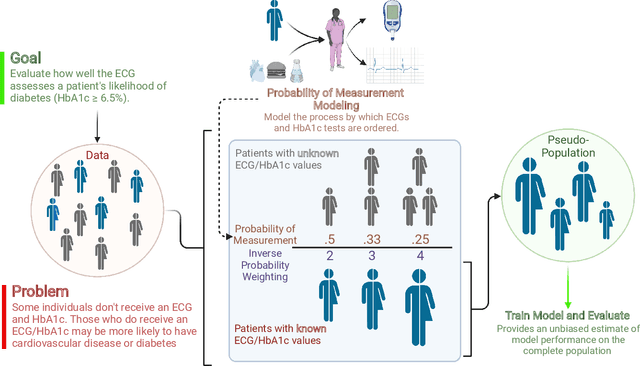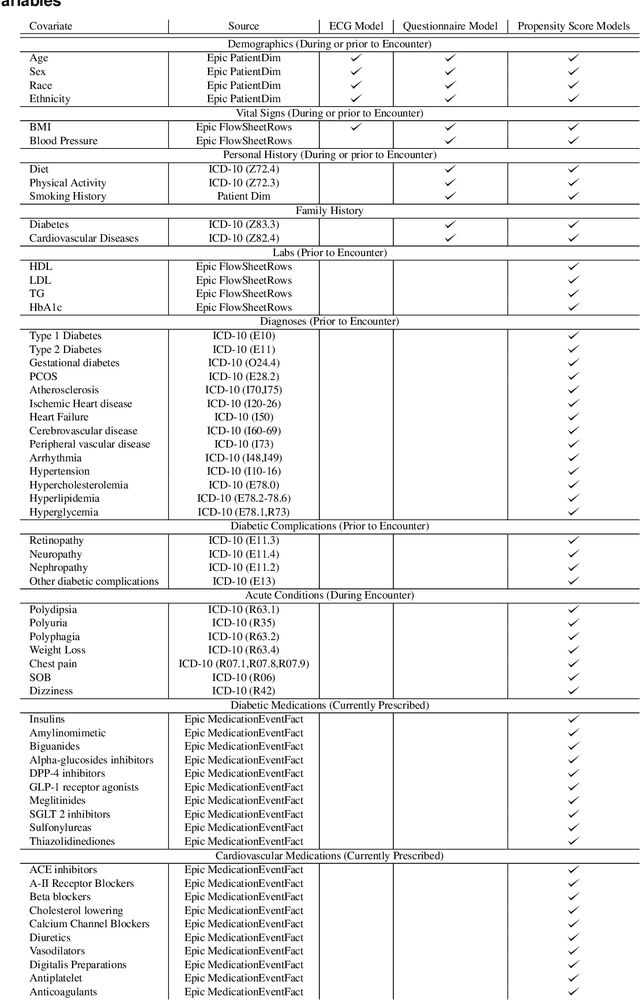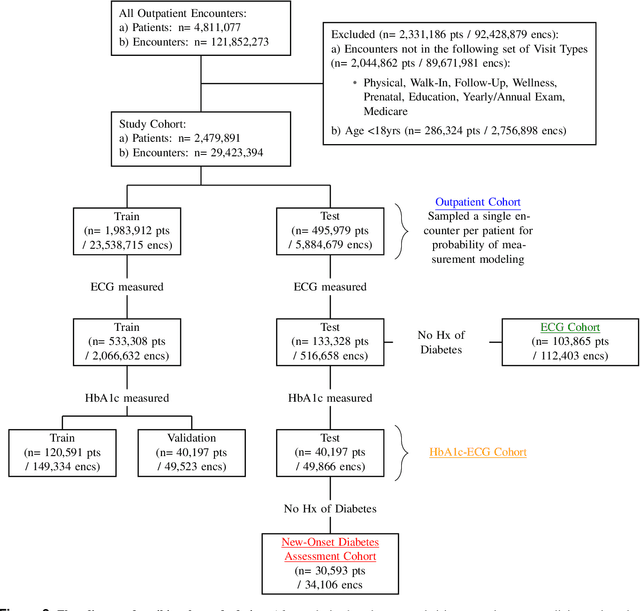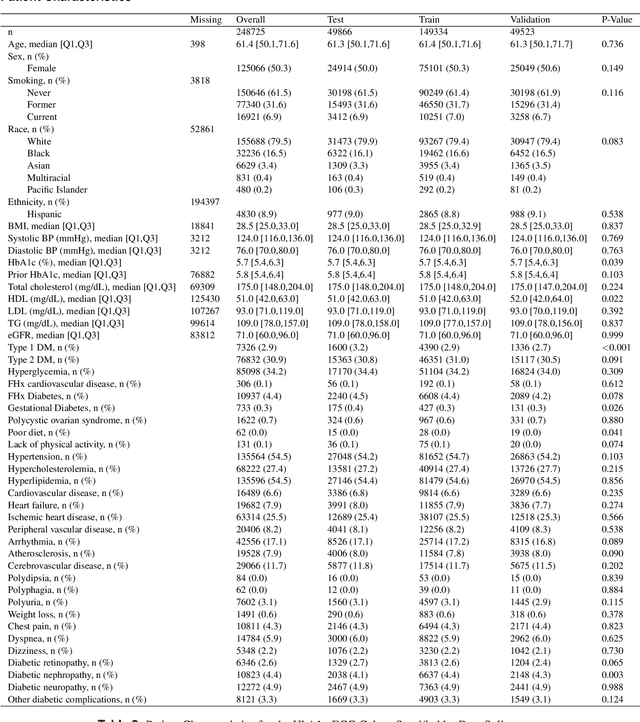Lior Jankelson
New-Onset Diabetes Assessment Using Artificial Intelligence-Enhanced Electrocardiography
May 05, 2022



Abstract:Undiagnosed diabetes is present in 21.4% of adults with diabetes. Diabetes can remain asymptomatic and undetected due to limitations in screening rates. To address this issue, questionnaires, such as the American Diabetes Association (ADA) Risk test, have been recommended for use by physicians and the public. Based on evidence that blood glucose concentration can affect cardiac electrophysiology, we hypothesized that an artificial intelligence (AI)-enhanced electrocardiogram (ECG) could identify adults with new-onset diabetes. We trained a neural network to estimate HbA1c using a 12-lead ECG and readily available demographics. We retrospectively assembled a dataset comprised of patients with paired ECG and HbA1c data. The population of patients who receive both an ECG and HbA1c may a biased sample of the complete outpatient population, so we adjusted the importance placed on each patient to generate a more representative pseudo-population. We found ECG-based assessment outperforms the ADA Risk test, achieving a higher area under the curve (0.80 vs. 0.68) and positive predictive value (14% vs. 9%) -- 2.6 times the prevalence of diabetes in the cohort. The AI-enhanced ECG significantly outperforms electrophysiologist interpretation of the ECG, suggesting that the task is beyond current clinical capabilities. Given the prevalence of ECGs in clinics and via wearable devices, such a tool would make precise, automated diabetes assessment widely accessible.
Adversarial Examples for Electrocardiograms
Jun 04, 2019



Abstract:In recent years, the electrocardiogram (ECG) has seen a large diffusion in both medical and commercial applications, fueled by the rise of single-lead versions. Single-lead ECG can be embedded in medical devices and wearable products such as the injectable Medtronic Linq monitor, the iRhythm Ziopatch wearable monitor, and the Apple Watch Series 4. Recently, deep neural networks have been used to automatically analyze ECG tracings, outperforming even physicians specialized in cardiac electrophysiology in detecting certain rhythm irregularities. However, deep learning classifiers have been shown to be brittle to adversarial examples, which are examples created to look incontrovertibly belonging to a certain class to a human eye but contain subtle features that fool the classifier into misclassifying them into the wrong class. Very recently, adversarial examples have also been created for medical-related tasks. Yet, traditional attack methods to create adversarial examples, such as projected gradient descent (PGD) do not extend directly to ECG signals, as they generate examples that introduce square wave artifacts that are not physiologically plausible. Here, we developed a method to construct smoothed adversarial examples for single-lead ECG. First, we implemented a neural network model achieving state-of-the-art performance on the data from the 2017 PhysioNet/Computing-in-Cardiology Challenge for arrhythmia detection from single lead ECG classification. For this model, we utilized a new technique to generate smoothed examples to produce signals that are 1) indistinguishable to cardiologists from the original examples and 2) incorrectly classified by the neural network. Finally, we show that adversarial examples are not unique and provide a general technique to collate and perturb known adversarial examples to create new ones.
 Add to Chrome
Add to Chrome Add to Firefox
Add to Firefox Add to Edge
Add to Edge